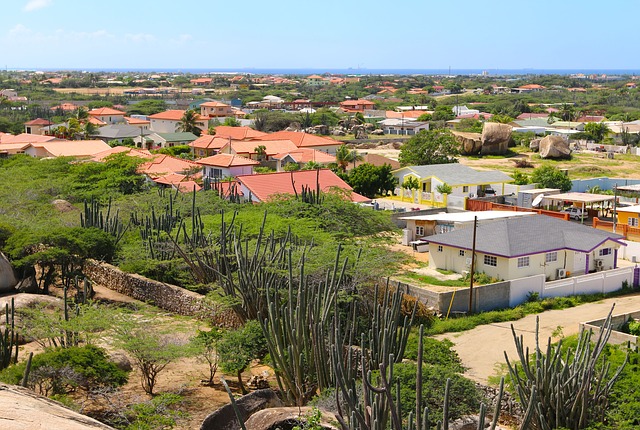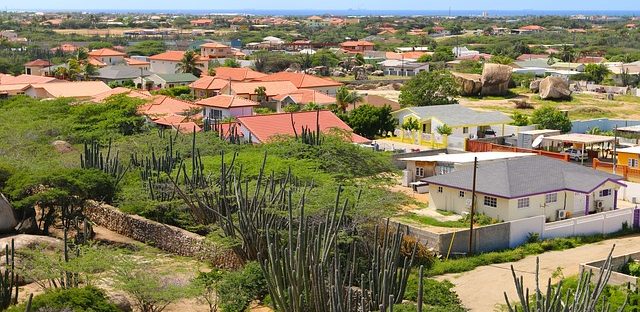- Target: Cover all electricity demand by 100% renewable sources by 2020.
- Status: In progress - To date, 15.4% electricity generation is from renewable energy.
- RES: 30-MW wind park, and waste-to-energy project generating electricity through biogas.
- Implementation: The Caribbean island of Aruba in the Caribbean is an autonomous member of the Kingdom of the Netherlands located off the coast of Venezuela. Aruba's economy is based largely on tourism with nearly 1.5 million visitors per year, which has contributed to Aruba’s high population density with about 500 people per square kilometre (more than New York). In response, the Government of Aruba realised that the island’s economic development must shift in order to maintain and preserve the country's infrastructure and natural resources. In 2009, Aruba launched the islands first wind park. In 2011, the Government published its economic vision and policy plan with the title “The Green Gateway”. It includes plans to promote renewable energy on the island in order to secure and preserve its valuable but fragile natural resources. During the Rio +20 United Nations Conference on Sustainable Development in 2012, the island announced it aim to cover its electricity demand by 100% renewable sources by 2020. In the same year, Aruba together with other Caribbean islands became member of the Carbon War Room’s Ten Island Challenge, an initiative launched at the Rio +20 Conference aiming for islands to shift towards 100% renewable energy. The benefits of becoming 100% renewable for Aruba include: reducing its heavy dependency on fossil fuel, thus making it less vulnerable to global oil price fluctuations, drastically reducing CO2 emissions, and preserving its natural environment.
- Population: 104,822 (2016)
- Area: 178.91 km2 (69.08 sq mi)
- Link: http://www.utilitiesarubanv.com/main/wp-content/uploads/pdf/green-deck-aruba.pdf

